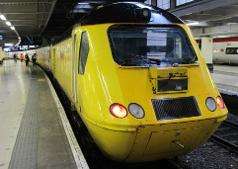New model helps reduce cost of flooding on railways

Flooding is a major contributor to rail delays with huge cost implications. 2012/13 was the second wettest year in the UK national record and resulted in significant disruption to rail services and infrastructure. Some £136 million in compensation was paid to train operators in consideration of unplanned delays and cancellations in that year.
Using information on previous flooding events provided by Network Rail, who commissioned the research, combined with data on environmental factors such as meteorology, soil hydrology, land use and surface water run-off, the team were able to develop a flood risk model that enables Network Rail to predict more accurately potential risk areas in the future.
The model uses an analytical technique called CART, or 'Classification and Regression Tree', to collate the different model inputs. A web portal and 3D visualisation system was further developed for Network Rail engineers to draw on all of the model outputs, and allow access to flood risk profiles, flooding alerts and other data.
Jon Drea, Head of Analysis and Reporting at Network Rail said: "The extreme weather we faced earlier in the year presented significant challenges in trying to keep trains running. We worked with Cranfield students to develop ways in which we could turn information about our assets into valuable intelligence that would allow front line staff to understand the risk of flooding across the network. I was really impressed with the level of knowledge the students brought to the project. I was equally impressed with their drive and determination to deliver an excellent project to me as their client."
Dr Stephen Hallett, who led the project for Cranfield University, said: "This project has provided Network Rail with a powerful methodology for undertaking integrated flood risk assessment, which could now potentially be extended to other parts of the network beyond the case study areas, as well as to other types of incident (for example, landslips or embankment failures). Overall, the techniques and tools developed during this project could contribute usefully to managing the rail network and related national critical infrastructure."
Provided by Cranfield University


















